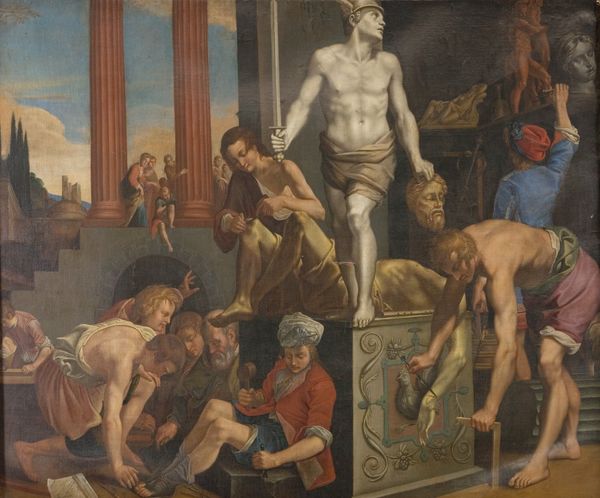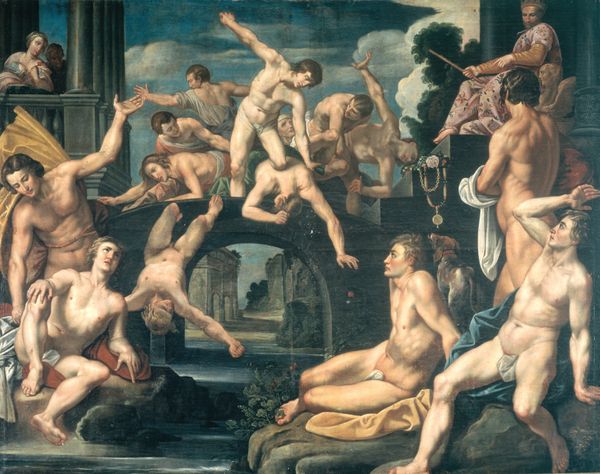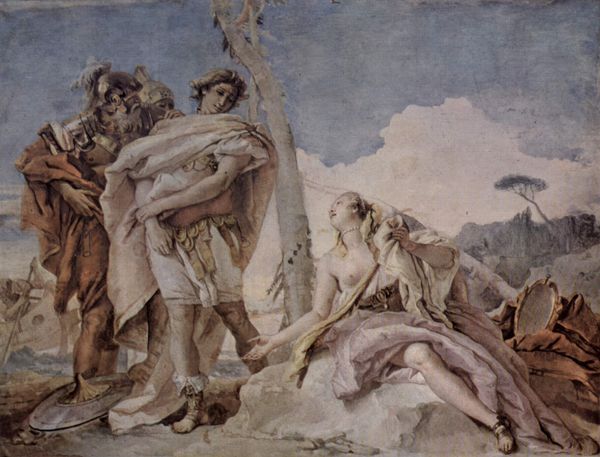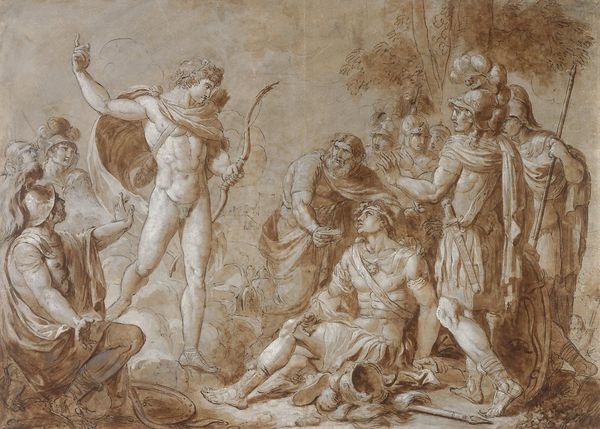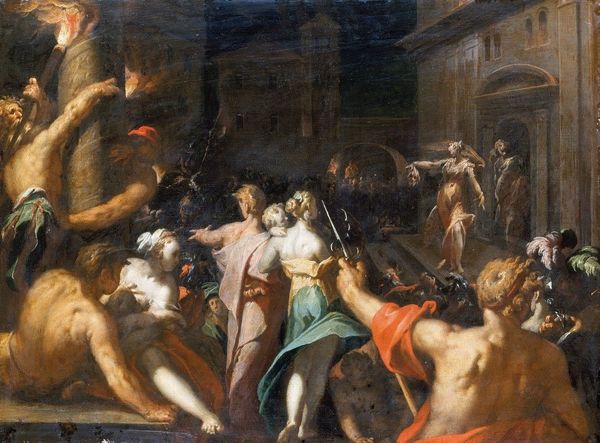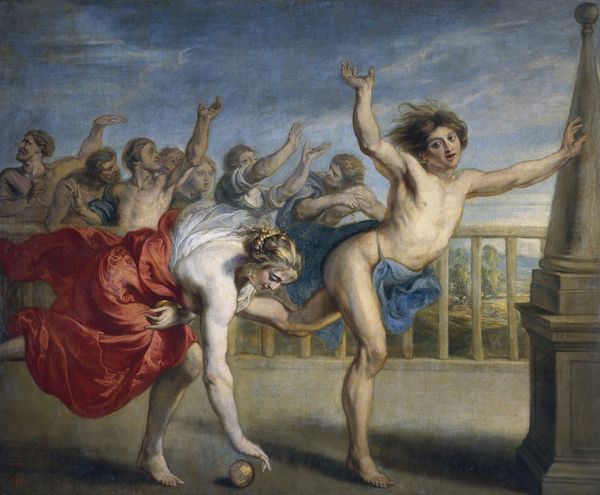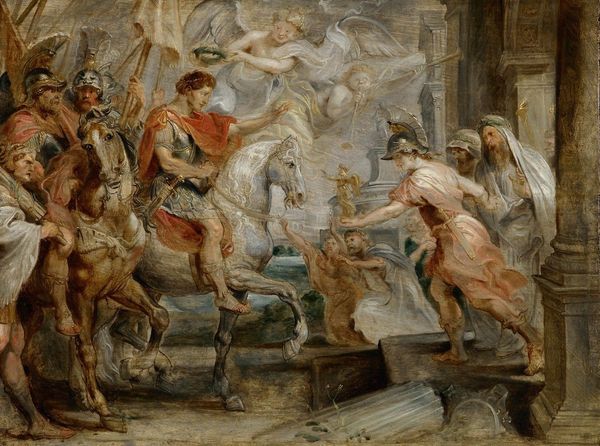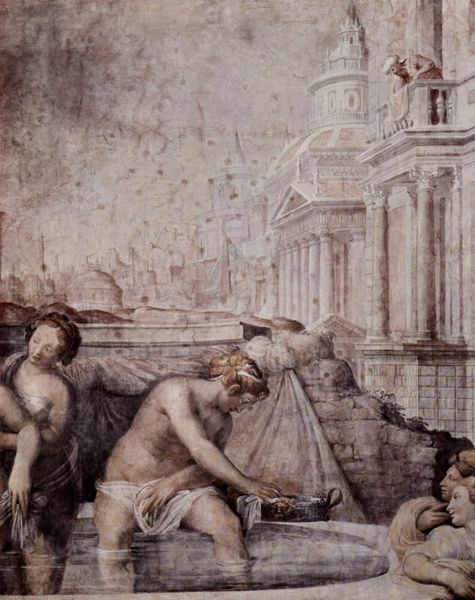
painting, oil-paint
#
narrative-art
#
baroque
#
painting
#
oil-paint
#
figuration
#
oil painting
#
roman-mythology
#
mythology
#
history-painting
#
italian-renaissance
#
nude
Copyright: Public domain
Annibale Carracci created this painting of "Perseus and Phineas" in Italy during the late 16th century, a period marked by the influence of the Catholic Church and the rise of powerful aristocratic families. This artwork depicts a scene from classical mythology, reflecting the cultural elite’s interest in ancient Greek and Roman culture. However, Carracci’s interpretation goes beyond mere illustration. He uses the mythological narrative to comment on the social structures of his time. Notice how Perseus, a hero, uses Medusa’s head to turn his enemies into stone, symbolizing the power of the ruling class to silence dissent. The painting’s dramatic composition and dynamic figures highlight the political tensions and conflicts that characterized Italian society during the Renaissance. Carracci’s choice of subject matter and his artistic style both speak to the complex relationship between art, power, and social control in his era. To understand this artwork better, we can research the patronage system of the time, the role of the Church in artistic production, and the political climate in Italy during the late 16th century.
Comments
No comments
Be the first to comment and join the conversation on the ultimate creative platform.
